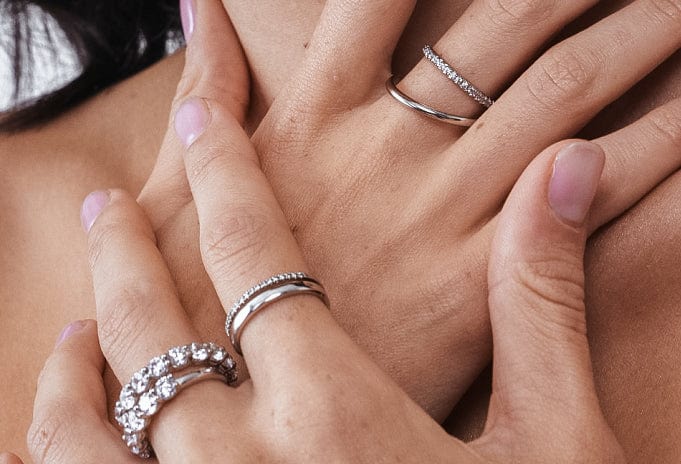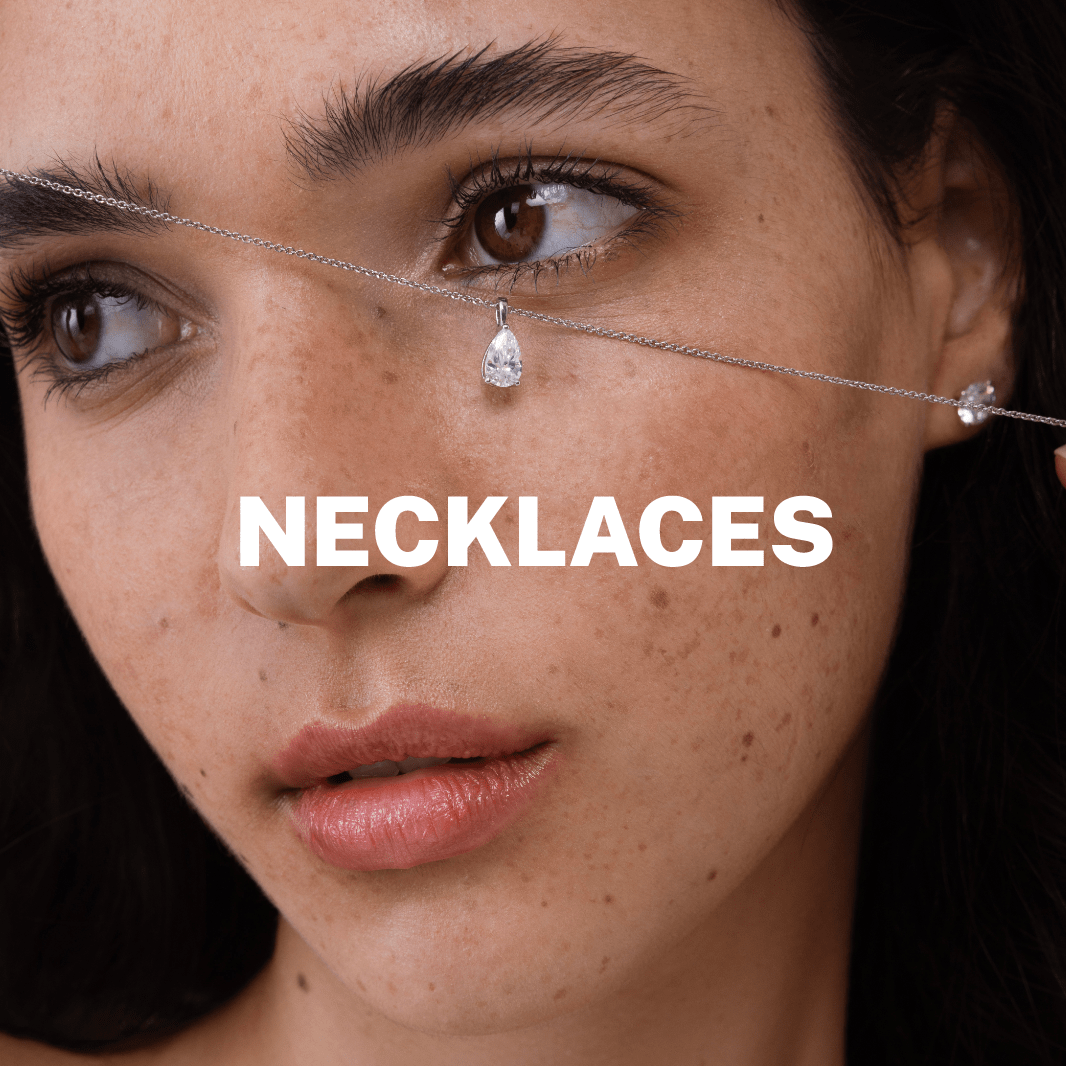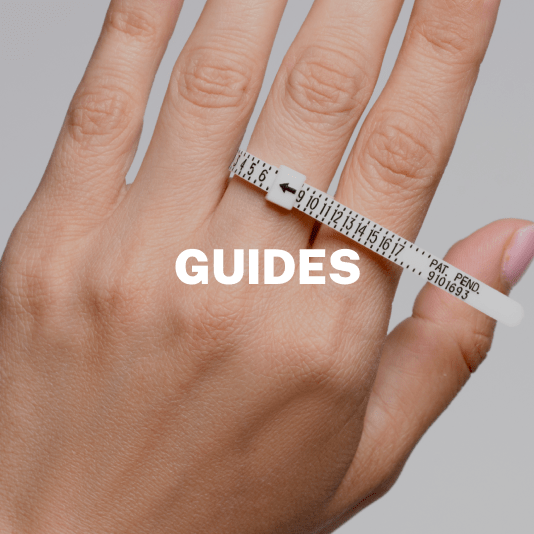


Gold and Platinum Metals
Gold Purity (karat)
The percentage of gold in a piece of jewelry is measured in karats. Pure gold is 24K, however is generally too soft to work with and therefore is often mixed with other metals creating a harder alloy.
The metals used with the pure gold create different gold colors and shades. The higher the Karat is, higher the percentage of pure gold there is in the piece. It is important to note that pure gold or 24K gold is very soft, so it also follows that the higher the Karat is the softer the piece will be.
14K Gold
14 karat gold is often marked '585' to indicate the gold percentage of 58.5% pure gold in the piece of jewelry. 14K gold is slightly harder and whiter than the 18K option, but is slightly lighter, due to the lower gold purity. Our jewelry is made in 14K white and yellow gold as standard. As pure gold is a very soft metal, the higher the purity, the more easily it can bend out of shape. We find that 14K offers the best balance of a silky smooth polish and lifetime durability.
18K Gold
18K gold is 18 parts pure gold and 6 parts other metals. This mix makes the gold jewelry 75% pure gold. 18K jewelry is often marked as '750' to indicate the pure gold percentage. On request, any of our designs can be made in 18K white or yellow gold.
10K gold is the minimum Karat that is still considered to be gold in most countries. It is 10 parts pure gold and 14 parts other metals, that means that the piece of jewelry is 41.7% pure gold. 10K gold is often marked with 417 to indicate the percentage of gold in the piece.
White Gold
White gold is pure (yellow) gold mixed with white metals such as silver, palladium and nickel. The result is a gold alloy mixture of off-white color. To achieve a dazzling white finish, white gold is polished and dipped in pure rhodium. To maintain this beautiful white look, it's recommended to have your white gold jewelry cleaned and re-dipped in rhodium every few years.
Platinum
Platinum is a naturally white metal with the same dazzling white finish as white gold after it's been rhodium plated. Platinum is more dense and stronger metal compared to gold and is used in high purity (over 95%). Platinum jewelry is stamped 'PLAT' or '950'. The 950 platinum marking on the jewelry refers to the purity content of the platinum, so it's just 5% other metals in the alloy. Compared to 14K white gold for example, which is stamped '585' for 58.5% purity.
The main advantage of platinum jewelry, beyond its heavy feel and high purity, is that it keeps its white finish and doesn't require periodic maintenance like white gold. So if you're wondering, is platinum or white gold better, well for practical everyday use both are great. However platinum does have the added advantage of lower maintenance.
Jewelry Metal FAQs
Why choose 14K gold for my jewelry setting?
14K gold offers the perfect blend of durability and beauty, with a high percentage of hard metals in its alloy composition. While offering the same visual appeal as 18K gold, it provides added strength for everyday wear.
Is platinum a viable option for my fine jewelry?
Absolutely, platinum is a premium choice known for its pure white luster that doesn't require rhodium plating. Though it tends to be pricier and can be more challenging to re-polish if scratched, it's an exquisite option for those seeking a white metal.
Is white gold the same as platinum?
No, white gold is an alloy of yellow gold and white metals, while platinum is a distinct, naturally white metal. Each offers unique properties and aesthetic qualities.
How can I maintain the luster of my gold jewelry?
Your gold jewelry is designed to last a lifetime with proper care. It's advisable to have it cleaned and professionally polished every few years. For white gold pieces, reapplication of rhodium plating is recommended to maintain their bright white finish. Visit our care guide for more tips.
Are there hypoallergenic options for your fine jewelry settings?
Both gold and platinum are hypoallergenic materials that won't irritate your skin. However, in rare instances, white gold alloys that include nickel could cause allergic reactions once the rhodium plating wears down.
What ethical considerations are there when choosing a metal for my jewelry?
We source all our precious metals and diamonds in compliance with the ALM, Kimberly, and our own stringent sourcing policies. This ensures ethical labor practices and prevents money laundering and funding of terrorism. When opting for recycled metals, it's crucial to choose carbon-neutral recycling methods, as some refining processes can be environmentally damaging.
































